Songnisan National Park (Chungcheongbuk-do Section) [속리산국립공원(충북)]
10.8Km 2024-03-15
Sangpan-ri, Songnisan-myeon, Boeun-gun, Chungcheongbuk-do
+82-43-542-5267
Situated in the heart of the Sobaek Mountain Range, Songnisan National Park encompasses the majestic Songnisan Mountain, standing at 1,057 meters, and the picturesque Hwayanggyegok, Seonyugyegok, and Ssanggok Valleys. Designated as a National Park in 1970, this natural sanctuary is celebrated for its stunning landscapes and unique rock formations. Key highlights include the awe-inspiring peaks of Cheonhwangbong, Munjangdae, and Birobong. Additionally, the park is home to historical and cultural treasures such as Beopjusa Temple, Seongbulsa Temple, and the ancient Gyeonhwonsanseong Fortress.
Mansugyegok Valley (만수계곡)
11.0Km 2025-01-17
136, Mansu-gil, Songnisan-myeon, Boeun-gun, Chungcheongbuk-do
Mansugyegok Valley is a 4 km-long valley fed by the Samgacheon Stream, which originates from Cheonwangbong Peak in Songnisan Mountain and flows into Samga Reservoir. Its name refers to how it has enjoyed tens of thousands of years of age. Its clear water and lush forests make it a popular summer and forest bath destination. The summit of the Songnisan Mountain can be reached along the valley. There’s also a trail that leads to the Beopjusa Temple of Songnisan Mountain.
Daeyasan Yongchugyegok Valley (대야산 용추계곡)
11.0Km 2021-02-16
Gaeun-eup, Mungyeong-si, Gyeongsangbuk-do
+82-54-550-6414
Yongchugyegok Valley is considered the most majestic among the eight scenic views of Mungyeong. The valley is locating along the rocky foothills of Daeyasan Mountain, bordering Goesan-gun, Chungcheongbuk-do. According to legends, this valley was where two dragons soared into the heavens and their traces still remain on the two huge granite rocks. The valley is also known to have a pool of water that never dries up, and people of the past would come here to pray for rain at times of drought.
Daeyasan Mountain (대야산)
12.7Km 2024-02-22
Gaeun-eup, Mungyeong-si, Gyeongsangbuk-do
Daeyasan Mountain is a stunning peak standing at an elevation of 931 meters within the confines of Songnisan National Park. It boasts picturesque valleys, including Seonyudonggyegok Valley and Yongchugyegok Valley. Among the notable attractions within Yongchugyegok Valley is the Yongchupokpo Falls, characterized by its three-tiered cascades, with a unique heart-shaped pool formed amidst the milky-white granite. After a 20-minute ascent from Yongchu, visitors can experience the breathtaking sight of moonlight reflecting off the rocks and the valley, known as Woryeongdae.
Mungyeong Seonyudonggyegok Valley (선유동계곡(문경))
12.8Km 2025-10-23
Wanjang-ri, Mungyeong-si, Gyeongsangbuk-do
+82-54-550-6392
Seonyudonggyegok Valley in Mungyeong is longer and more beautiful than the valley of the same name in Goesan. Daeyasan Mountain (931 meters) runs across both valleys, which are 10 kilometers apart from each other. The valley is relatively untouched as it is not yet well known to the public. At the beginning and the end of the trail are Hakcheonjeong and Chirujeong Pavilions, respectively. Both sides of the valley are lined with thick forests of ancient pine trees. A number of stone carvings can be found in the forest, and the most famous one reads “Seonyugyegok.” It was written by Choi Chi-won, a leading scholar of the Silla kingdom.
Goesan Historic House of Song Byeong-il (괴산 송병일 고택)
13.0Km 2024-02-15
17 Cheongcheon 4-gil, Cheongcheon-myeon, Goesan-gun, Chungcheongbuk-do
This dwelling is a well-preserved example of a traditional Korean house built in the late 19th century, a relic from the era of the Joseon dynasty. It offers insight into the architectural design of the period as well as the domestic life of the Joseon aristocracy. The house also bears historical significance as the residence of the descendants of Uam Song Siyeol, a prominent Neo-Confucian scholar of the dynasty. The layout features distinct sarangchae (the men's quarter) and anchae (the women's quarter), with a gate and a storage facility for essential supplies situated between them. This set up offers visitors an authentic experience of the Joseon dynasty’s traditional household structures. Encircled by a tranquil forest, this old house transports visitors to a time long past..
Gubyeongsan Mountain (구병산)
13.8Km 2024-02-26
Jeogam-ri, Maro-myeon, Boeun-gun, Chungcheongbuk-do
Gubyeongsan Mountain is an 876 m-high mountain located on the southern side of Songnisan National Park. It is also known as "Gubongsan Mountain" because it is said to have nine (gu) peaks (bong). There is a lush forest with plenty of beautiful rocky cliffs. Visit in the fall to enjoy the true beauty of the place. Boeun’s basin geographical feature can be seen from the summit.
Seowongyegok Valley (서원계곡)
14.3Km 2024-02-26
491-4, Jangan-ro, Jangan-myeon, Boeun-gun, Chungcheongbuk-do
Seowongyegok Valley is fed by the Samgacheon Stream, which originates from Songnisan Mountain and flows through Samga Reservoir in an S-shaped curve. It is relatively gentle in slope, and the stream is quite wide. The area is home to the 600-year-old Seowon-ri Pine Tree. Aside from enjoying the beautiful view of the area, one can also swim in the valley in summer.
Cheongseokgul Cave (옥화1경 청석굴)
15.3Km 2025-02-04
12-16 Unam 3-gil, Miwon-myeon, Sangdang-gu, Cheongju-si, Chungcheongbuk-do
Cheongseokgul Cave is a natural cave where prehistoric humans lived, with artifacts from the Paleolithic era, such as choppers and chopping tools (hammers), points, and hand axes, discovered inside. The place stays cool even during hot summer, and is currently home to bats and golden-capped fruit bats. Nearby attractions are an artificial waterfall and a sky observatory with a valley in front of the cave available for water activities and kayaking.
Boeun Samnyeonsanseong Fortress (보은 삼년산성)
15.4Km 2025-01-09
104, Seongju 1-gil, Boeun-gun, Chungcheongbuk-do
+82-43-540-3406
Samnyeongsanseong Fortress was built during the Silla dynasty. The sprawling stone walls stretch 1.7 kilometers in length with x_heights and x_widths of 13-20 and 8-10 meters respectively. The name of the fortress comes from the time it took to complete the construction, three years ("sam nyeon" in Korean). The fortress was the site of many battles between Silla and Baekje during the Three Kingdoms Period.
![Songnisan National Park (Chungcheongbuk-do Section) [속리산국립공원(충북)]](http://tong.visitkorea.or.kr/cms/resource/04/2677704_image2_1.jpg)
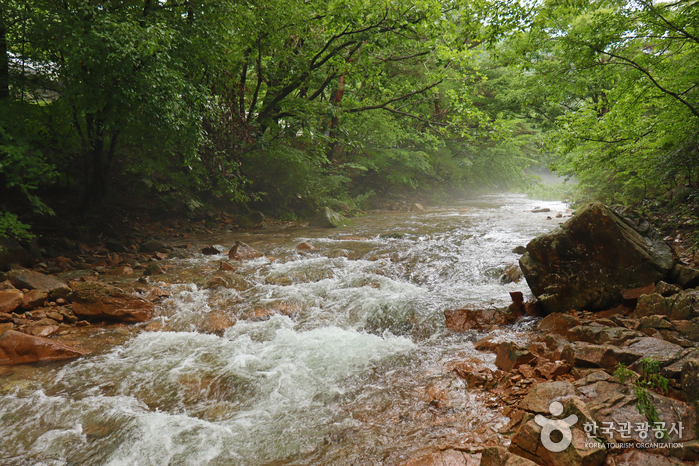
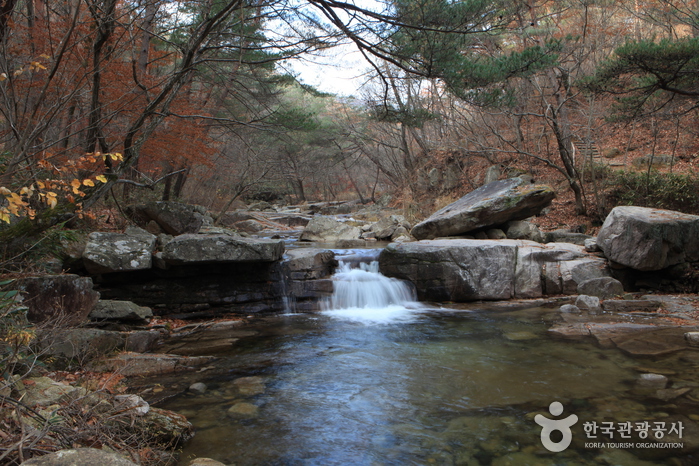
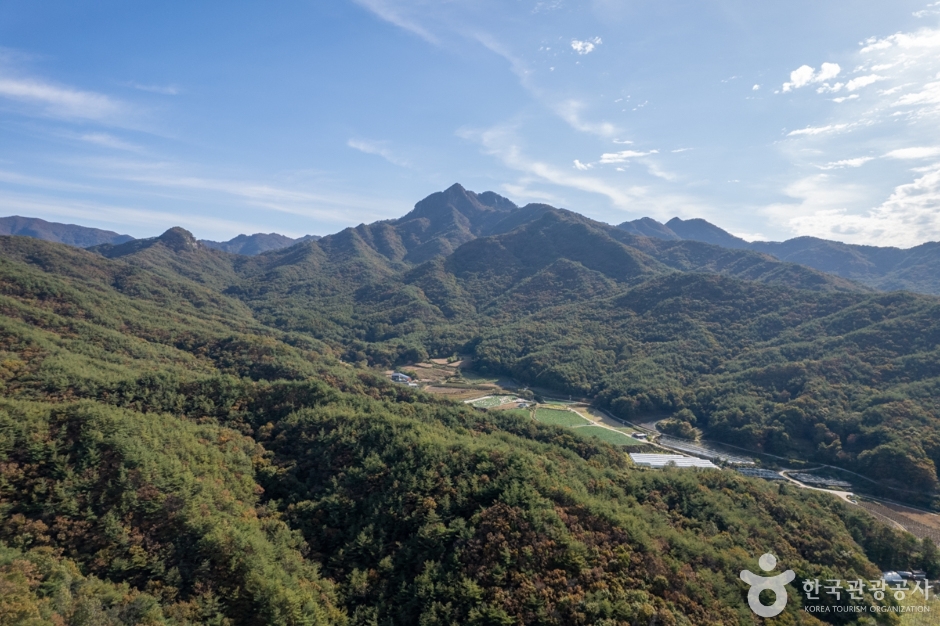
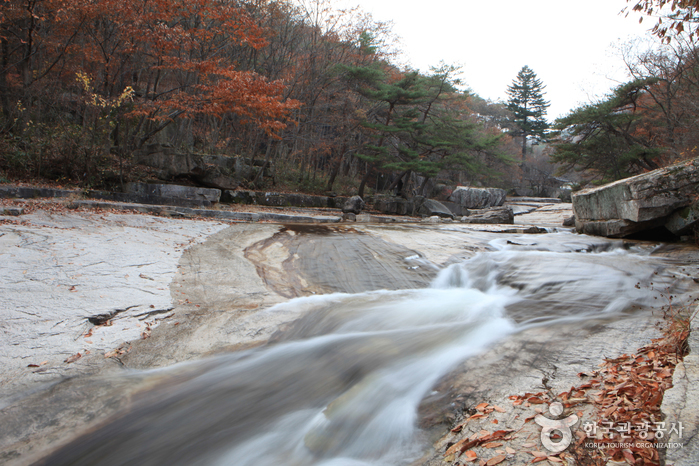



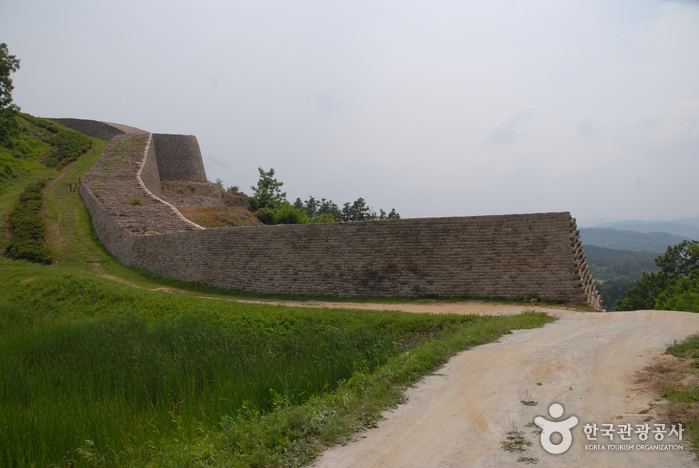
 English
English
 한국어
한국어 日本語
日本語 中文(简体)
中文(简体) Deutsch
Deutsch Français
Français Español
Español Русский
Русский